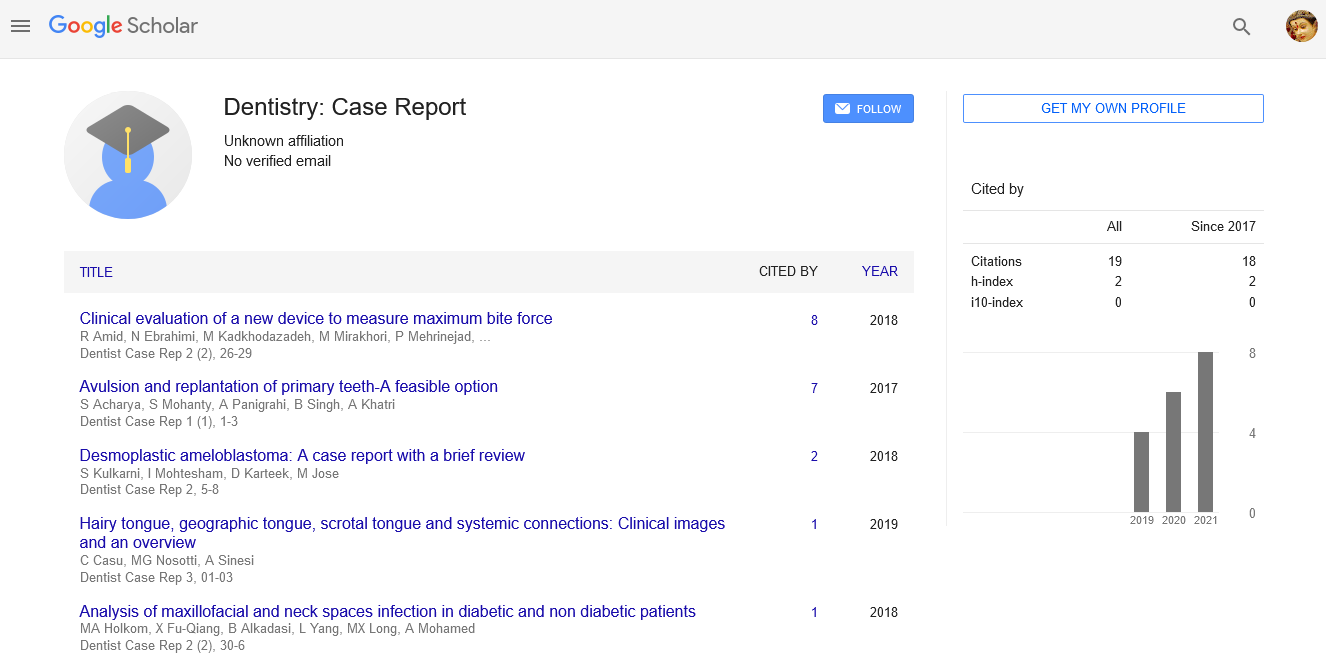Oral Health Challenges: Global Burden of Disease as Information Resource for PolicyŌĆÉMaking and Health Situation Analysis
Received: 29-Jan-2018 Accepted Date: Jan 31, 2018; Published: 07-Feb-2018
Citation: da Fonseca EP. Oral Health Challenges: Global Burden of Disease as Information Resource for Policy-Making and Health Situation Analysis J Dent Oral Res 2018;1(1):3.
This open-access article is distributed under the terms of the Creative Commons Attribution Non-Commercial License (CC BY-NC) (http://creativecommons.org/licenses/by-nc/4.0/), which permits reuse, distribution and reproduction of the article, provided that the original work is properly cited and the reuse is restricted to noncommercial purposes. For commercial reuse, contact reprints@pulsus.com
Editorial
The life expectancy of the population has increased significantly in the last decades and people all over the world are living longer than in any another age and the population is aging [1]. This gain in life expectancy has been accompanied by important changes in the composition of diseases and injuries, with emphasis on the progressive increase of chronic diseases that are more resistant to treatment, difficult to prevent and long lasting [2].
To ensure that a health system is adequately health challenges of a population, policy makers should to compare the effects of different diseases that prematurely kill people and cause poor health [1,2]. The origin of the Disease Burden studies is in World Bank’s 1993 World Development Report: Investing in Health. Originally designed for comparisons across regions of the world, disease burden studies have been conducted in a number of countries, regions and same country, making it possible to verify inequalities and inequities in health within the same geographic unit3.
The Global Burden of Disease Study (GBD) approach is a systematic and scientific effort to quantify the comparative magnitude of the health loss diseases, injuries and risk factors by age, sex and geography for specific points in time [1-3]. The goal is to create a global public good that will be useful in informing the design of health systems and the creation of a public health policy. He estimates premature death and disability due to 291 diseases and injuries, 1,160 sequelae (direct consequences of illness and injury), and 67 risk factors for 20 age groups and both sexes. In addition to comparable information on the impact of fatal and nonfatal conditions, need comprehensive data on the causes of that are most pertinent for each country.
The GBD study included worst oral conditions: untreated caries, severe periodontitis, and severe tooth loss [4,5]. The oral conditions analyzed are shifting from severe tooth loss toward severe periodontitis and untreated caries. Thus, a reduction in the prevalence of tooth decay and periodontitis may contribute to reduce prevalence of tooth loss [4]. Studies highlight the challenge in solving to the diversity of oral health needs worldwide, particularly in Low income levels countries. Study showed that estimated direct costs of dental diseases amounted to $356.80 billion and indirect costs were estimated at $187.61 billion, totaling worldwide costs due to dental diseases of $544.41 billion in 20155. The highest levels of per capita dental expenditures were found for High-Income North America, Australasia, Western Europe, High-Income Asia Pacific, and East Asia [5]. From an economic perspective, improvements in population oral health may be highly beneficial and could contribute to further increases in people’s wellbeing given available resources5.
The GBD approach has underestimated the burden of oral conditions and seems to have increased in the past 20 years, but not evenly. Furthermore, these studies provide highly relevant information for preventive and therapeutic. The implications of this study for oral health care investment are useful in the planning of workforce needs and the content of dental education to responding oral health needs.
REFERENCES
- GBD-2015 DALYs and HALE Collaborators. Global, regional, and national disability-adjusted life-years (DALYs) for 315 diseases and injuries and healthy life expectancy (HALE), 1990-2015: A systematic analysis for the Global Burden of Disease 2015. Lancet 2016;388:1603-1658.
- GBD-2015 Healthcare Access and Quality Collaborators. Healthcare access and quality index based on mortality from causes amenable to personal health care in 195 countries and territories, 1990–2015: A novel analysis from the Global Burden of Disease Study 2015. Lancet 2017;390:231–266.
- Murray CJ, Lopez AD, WHO. The global burden of disease: A comprehensive assessment of mortality and disability from diseases, injuries, and risk factors in 1990 and projected to 2020: summary.
- Marcenes W, Kassebaum NJ, Bernabé E, et al. Global burden of oral conditions in 1990-2010: A systematic analysis. J Dent Res 2013;92:592-597.
- Righolt AJ, Jevdjevic M, Marcenes W, et al. Global-, Regional-, and Country-Level economic impacts of dental diseases in 2015. J Dent Res. 2018:0022034517750572.





